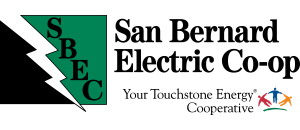Each year, approximately 36,000 people are treated in hospital emergency departments for injuries caused by using chainsaws. The potential risk of injury increases after hurricanes and other natural disasters when chainsaws are widely used to remove fallen or partially fallen trees and tree branches.
When trimming trees, do not trim near power lines. Only OSHA-certified line clearance tree trimmers are allowed by law to trim within 10 feet of power lines.
Aside from serious injury or electrocution from contact with or getting too close to an overhead power line or other electrical source, the three most common injuries from chainsaws are caused by kickback, binding and pull-in.
Kickback occurs when the chain’s teeth catch on something as they rotate around the tip of the blade. It may also happen when the nose strikes another object, starts to bore a cut improperly or catches the bottom or side of a cut while being reinserted.
Binding (or pinching) occurs when the material clamps down and stalls the cutting chain.
Pull-in happens when the chain at the bottom of the bar stops suddenly due to pinching or striking a foreign object, which can draw the saw forward.
When using a chainsaw on a job or at home, always wear protective clothing and glasses. Other basic safety tips include:
-
Read the owner’s manual carefully before operating a chainsaw.
-
Choose the proper size and type of chainsaw for the job.
-
Be sure that bystanders maintain a safe distance from cutting activities.
-
Check for hazards near the job, such as power lines, poles or other cables.
When trimming trees and branches:
-
Take extra care when cutting branches that have been bent, twisted, hung up on or caught under another object under high wind.
-
Realize that branches and trees react in different ways when they are cut, depending on the type, age and condition of the tree, as well as external factors such as weather and wind speed/direction. Other variables can also exist.
In addition, here are some other safety tips to follow when using a chainsaw.
DO:
• Make sure all safety functions on the saw work properly and are in place.
• Keep the chain clean, sharp and lubricated with the correct oil.
• Keep the cutting area clear.
• Work with a partner.
• Avoid overhead hazards, such as utility lines or dead, hanging limbs that may fall.
• Be careful of inclines and uneven ground.
• Stand to the side of what you are cutting.
• Keep the saw as close to you as possible for better control.
• Keep both hands on the saw handles.
• Cut at full throttle (i.e., bring the saw up to speed before starting to cut).
• Let the saw come to a complete stop before reaching for the chain or bar.
• Turn off the saw or activate the chain brake when carrying the saw.
• Ensure the saw is well-maintained and in proper working order.
DO NOT:
• Do not operate a saw alone.
• Do not wear loose clothing.
• Do not use the tip to cut.
• Do not cut with a chainsaw above shoulder height.
• Do not refuel a hot saw.
The tips provided are not all-inclusive; instead, they are a reminder to keep safety first. Remember, an injury is much more inconvenient, painful and costly than taking the time to do the job safely.
